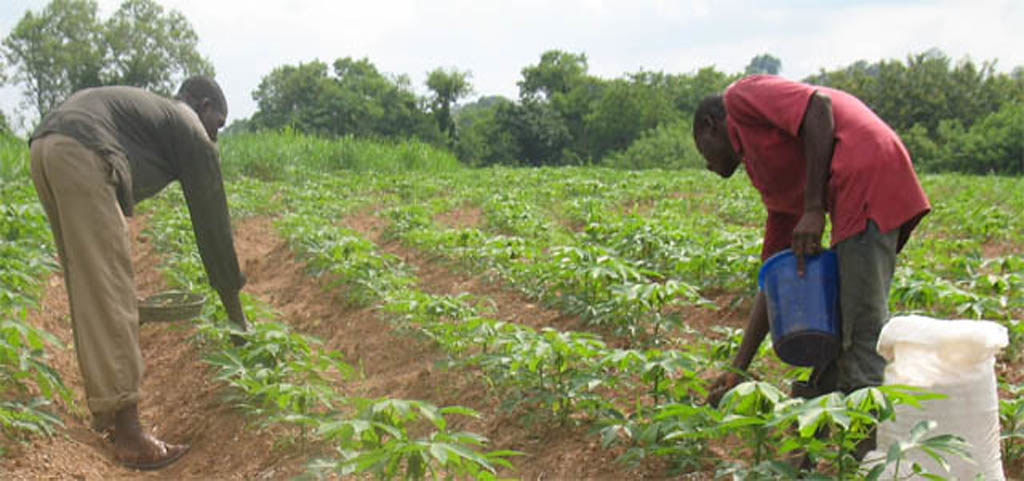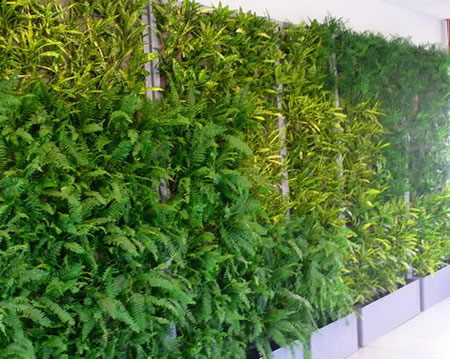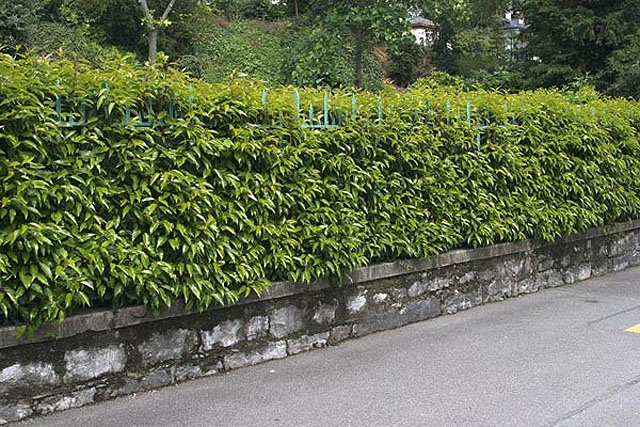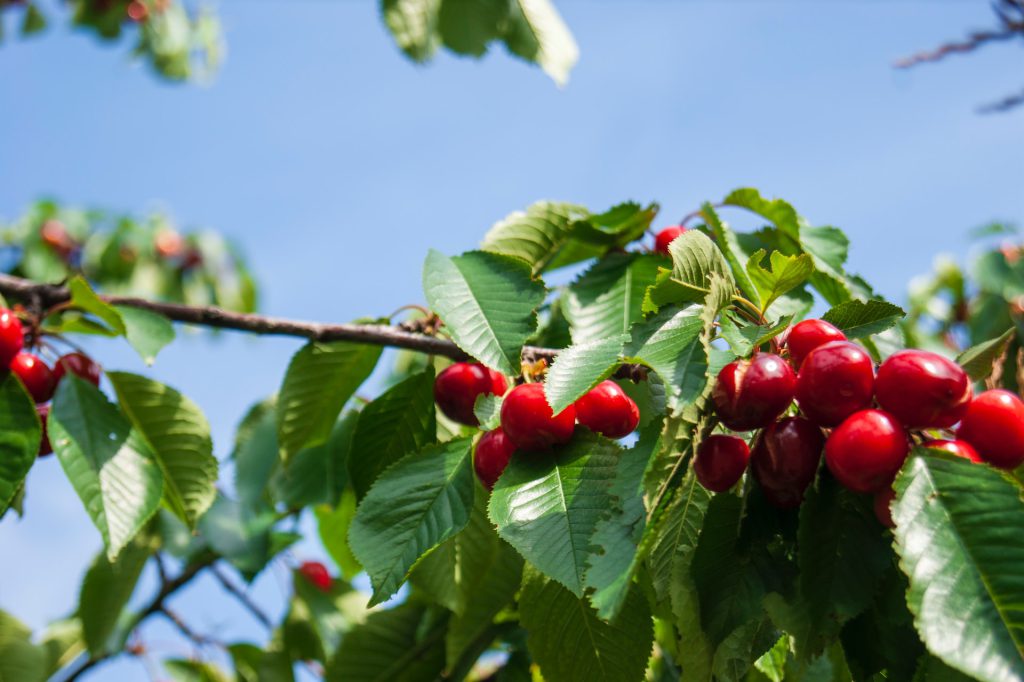In the first post (Chemical and organic fertilizers (manure, compost, peat, green manure, rotating crops, soils)) of these 2 parts series about fertilizers for plants, we talked about the differences between chemical and organic fertilizers.
In this article we will talk about:
1. How and when to apply fertilizers – Times to apply fertilizer
2. The essential nutrients for plants and their importance
3. How to read the label of fertilizers
4. The reaction of fertilizers with the soil
5. How to calculate the right dose for the fertilizer
1. How and when to apply fertilizers – Times to apply fertilizer
An important role in the correct use of fertilizers, either quantitatively or in terms of nutrients, is the proper way and time of application. The interaction of the elements with the soil, their duration and the fertility of the soil depend on this choice. Depending on the period of growth of our plant, we have different ways of adding the fertilizer, which also ensures different ways of absorbing the elements and the best possible effect. Even the slightest “misstep” can cause an acceleration or deceleration in the growth rate and change the chemical composition of the product ( fruit, leaves).
In practice we have 3 periods to apply fertilizer:
- before sowing (together with digging, ploughing, etc.)
- during sowing, and
- during plant growth
Applying fertilizer before sowing (basal application)
It is considered basic fertilization (basal application) and ensures the necessary nutrients for a long period of time and with this fertilization we give our plants most of the dose of fertilizer prescribed for each type of crop (tree, vegetable, horticultural, etc.). Exception: Basal application of fertilizers does not ensure the sufficiency of nutrients in seedlings because their root system is still young and small and has to develop to reach the points where the fertilizers are located. So in this case, you collect small amounts of fertilizer and apply it locally and close to where the seedlings will be sown.
As a rule, basal fertilization is carried out in the following way: the fertilizer is spread over the surface of the pot’s soil, garden’s soil or field’s soil. In the case of the pot or garden (depending on the size of the area of course) it is done in the traditional way: ‘by hand’.
For those who have a very large garden or grow in a field, there is a machine, the fertilizer spreader. Fertilizer spreaders spread the fertilizer over the whole surface or in strips.
The fertilizer is then spread in the autumn or early spring before sowing.
Based on experimental data, phosphorus and potassium should be incorporated to a depth of 15-20 centimeters.
Fertilizer application during sowing
For all annual crops it has been shown to be beneficial to add small doses of nitrogen and phosphorus at the same time as sowing, provided that the seeds and fertilizer are separated by a small layer of soil. Then, incorporate the fertilizer 2-3 centimeters deeper than the seed and 5-7 cm away from where you placed the seeds or planted the seedlings.
Adding fertilizer during plant growth
It is done either as a top dressing or by incorporating it into the soil. If in our garden we have planted the plants in rows, then surface fertilization (top dressing) is the preferable method. Also, supplemental fertilization and top dressing fertilization during spring are usually more effective than one-time basal fertilization, and more specifically, supplemental involves nitrogen, which is dissolved and moved through the soil reaching the roots of the plant.
Fertigation
Fertilizers can also be applied through irrigation water (even for those of you who have pots or a small gardens and have irrigation pipes installed).
Fertilizing of the plants is done through the water but with small amounts of fertilizer.
It is a technique that has been widely used in recent years and for this reason special irrigation systems have been developed, as well as fertilizers that are easily and completely dissolved in water, the so-called water-soluble ones.
With the method of fertigation, plants can make better use of the nutrients provided to them, it is possible to cultivate even in very poor soils, we can control the quantities of fertilizer applied, thus avoiding undesirable concentrations, and at the same time we can apply pesticides.
A key condition for the success of fertigation is the choice of appropriate irrigation systems and fertilizers.
Foliar application of fertilizer
In this case we apply the fertilizer by spraying the foliage.
This is achieved by spraying the plant with a suitable foliar fertilizer.
This method of fertilization also acts as a complementary treatment in special cases.
Foliar fertilization works best and most effectively if it is preceded by a foliar diagnosis, i.e. leaf examination and analysis to see exactly what their nutritional status is and perhaps to prevent a possible nutrient deficiency.
With foliar fertilization we satisfy immediately specific nutrient needs of the plant.
It is an effective treatment and cure for food deficiencies and our plants respond very quickly.
Of course, there are also disadvantages, such as the results are limited only to the year of foliar application and must be repeated for the following year.
It should not be applied in periods that are unsuitable (indicated on the packaging of the fertilizer) or when we have strong wind and high temperatures (up to 27-28 degrees Celsius).
Finally, with foliar application, only a limited amount of nutrients is given to the plant.
Hydroponics
Hydroponics is a system of growing plants and vegetables not in the soil but in special substrates.
This system can also be used in gardens, either horizontally or vertically on a fence.
The special substrates can be pumice stone, rockwool, perlite, etc., which mainly provide support for the plants, while the plants are nourished by adding special nutrient solutions to the irrigation water.
Figure 1: Wall in offices in Peania, Greece: vertical planting, a special structure, metal or wooden, which will support the soil substrate on which the plants will grow.
Figure 2. Vertical garden in Zografou, Greece, covers an air conditioning unit.
The advantages of using pumice as a substrate: it greatly reduces soil-borne fungi, it is a material that does not need treatment, it presents an air-water balance at the roots of the plant and can be used, after hydroponic cultivation, as a soil conditioner without any impact.
2. The essential nutrients for plants and their importance
Nitrogen (N)
Nitrogen is the main component of chlorophyll and when there is a shortage plants are less green than healthy ones. Nitrogen deficiency in soil is manifested in plants by dwarfism, limited vegetation while its excess, causes such germination with negative effects on plant vigor.
In soil it is found mainly in the remains of organisms (organic form) and in the nitrate (NO-3) and ammonia (NH+4) form.
Ammoniacal nitrogen is not easily washed away by rain or irrigation and is very well retained by the soil.
In contrast, nitrate nitrogen is not retained in the upper layers of the soil and is carried by rain or irrigation water to the lower layers. For this reason, more frequent fertilization and lower doses are required during the growing season.
Plants use both forms of nitrogen but absorb the nitrate form more quickly.
Under favorable soil and climate conditions, 1.5-3 % of the total soil nitrogen is released during the year.
A very important element that also influences the nitrogen function is carbon.
When we have a high concentration of carbon in the soil, the available amount of nitrogen is limited.
In general, the quality of soil organic matter, soil nitrogen fertility and the biological processes that take place in all soils depend on the C:N ratio.
Phosphorus (P)
Phosphorus helps in the formation of flowers, speeds up maturation. Plants that do not take up phosphorus have thin shoots and premature leaf drop.
The most characteristic symptom of phosphorus deficiency is deep green or reddish color in various locations.
Phosphorus deficiency is mainly observed in soils that are acidic, sandy and light, which is why fertilizer doses should be smaller and more frequent in such soils and larger and less frequent in heavy soils.
The greatest utilization of other nutrients such as nitrogen and potassium is achieved when there is a sufficient supply of phosphorus in the soil.
Potassium (K)
Potassium is an element that is easily moved and concentrated in the water parts of the plant. It gives the fruits their taste but also makes them larger. Its sufficiency helps the plants to absorb water better, hence more drought resistant. Potatoes, sugar beet, corn and generally starch-accumulating crops have high requirements for potassium.
When we have sandy soil in our garden we fertilize more frequently and with smaller doses, while in heavier soils we fertilize with larger doses and more sparingly.
Potassium is best absorbed by the plants when we have an adequate supply of nitrogen and phosphorus, so we understand from the above that these three elements are interrelated and interdependent.
Potassium deficiency causes, especially in older leaves, necrotic spots around the periphery, the roots are smaller and the size of the fruits are smaller.
An indicator of potassium deficiency in the soil, is the thrive of weeds like poppy, wild tomato and clover.
Magnesium (Mg)
Magnesium is an irreplaceable element of chlorophyll.
High concentrations of magnesium act antagonistically with calcium and potassium. Magnesium deficiency first appears in older leaves as chlorosis (reduction of green color) between the nerves, these leaves fall off and the shoots die from the top.
The ideal K:Mg ratio in soil is 5:1 for annuals, 3:1 for vegetables and 2:1 for fruit plants.
Sulphur (S)
The soil usually has enough sulphur and additionally receives it with fertilizers such as ammonium sulphate, superphosphate, etc.
Plants absorb sulphur in the form of SO–4 ions.
High temperatures is the suitable condition to add sulphur to alkaline soils to improve them, due to the fact that pH is reduced.
Sulphur-demanding plants are alfalfa, tobacco, cauliflower, cabbage, broccoli and others.
Symptoms of sulphur deficiency are similar to those of nitrogen deficiency, i.e. chlorosis of the leaves and the shoots become thin and stiff.
Iron (Fe)
Iron is essential to plants due to chlorophyll and also for respiration.
In acidic soils it is found in the form of divalent iron (Fe++) which is the most assimilable and in neutral and alkaline soils in the form of Fe+++ which is both insoluble and the least assimilable.
Phosphorus and calcium act antagonistically to iron and essentially ‘inactivate’ it in the soil. A low concentration of potassium in the soil also has a negative effect on the utilization of iron.
A characteristic symptom of iron deficiency is the chlorosis of the entire leaf except for the nerves, which remain green.
Zinc (Zn)
Zinc is involved in plant metabolism.
The assimilable form of zinc (Zn++) is found in acidic soils, whereas in alkaline soils the insoluble form predominates and the soil is therefore deficient in this element.
Soils rich in organic matter have a low percentage of assimilable zinc, while zinc deficiency in plants is also caused by a high concentration of phosphorus.
Zinc as an element does not move easily in the soil, so when it is added it must be well incorporated.
In the case of zinc deficiency, the leaves show chlorosis between the nerves, the shoots are short and thin, while in the root there is necrosis first of the small and then of the large roots.
Manganese (Mn)
Manganese is involved in the availability of iron in the plant.
Plants take up only the divalent form (Mn++) which is found in acidic soils.
The manganese deficiency first appears in the lower leaves at the base of the plant, where greenish-yellow bands form between the nerves and the root system is susceptible to attack by soil microorganisms.
Copper (Cu)
Copper in soil is found in the form of divalent copper (Cu++) which is the assimilable form but again the plant takes up a very small amount, about 1%.
A characteristic symptom is the wilting of the leaves that are at the top of the plant. Also, gum, i.e. a sticky substance, is secreted from the bark and from the roots.
Boron (B)
Boron affects the uptake of calcium and plays a role in the amount of water in the plant.
The main source of boron is organic matter in the soil and high concentrations in the soil are due to either excessive amounts from fertilizers or water.
Symptoms of boron deficiency are necrosis of the leaves that look like burnt leaves, roots do not grow and remain small and there is successive necrosis on the shoots.
Plants sensitive to boron deficiency are: vines, alfalfa, cucumber, corn, tobacco, tomatoes, etc.
Susceptible to excess boron are: apricot, lemon, apple, pear, etc.
Molybdenum (Mo)
Molybdenum influences the function of chlorophyll and favors the formation of lamellae (serve as a cementing layer between the primary walls of adjacent cells).
In soil, molybdenum is found in the form MoO–4.
Molybdenum requirements are particularly high for legumes, i.e. alfalfa, clover, beans, etc.
The symptoms of molybdenum deficiency are similar to those of nitrogen.
Cobalt (Co)
The assimilable form of cobalt is the Co++ cation and its absorbency is reduced by organic matter and high pH.
Chlorine (Cl)
Chlorine helps plants have greater drought resistance.
In soil, the element is added with fertilizers such as ammonium chloride and potassium chloride and also with rain.
- Plants sensitive to chlorine: cucumber, blackberry, tobacco, onion, melon, hops, pepper, beans.
- Plants moderately sensitive to chlorine: tomato, potato, lettuce, vine, peas, spinach.
- Chlorine tolerant plants: radish, carrot, leek.
- Chlorine-demanding plants: celery, asparagus, sugar beet.
Sodium (Na)
Sodium is found in the soil in the form of Na+ and because it is very well retained by the soil, high concentrations of sodium salts are often found.
It is essential for spinach and beets.
Organic substance – humus
Organic matter – humus is that part of the soil that consists of plant and animal residues in various stages of decomposition.
Under favorable conditions of decomposition, it produces fertile humus, which regulates moisture, soil aeration and is a source of assimilable nutrients for the plant.
Acid humus has a negative effect on the structure of the soil and its productivity.
Neutral humus contributes to good soil structure and productivity and is therefore called: active-fertile humus.
Alkaline humus, containing many sodium ions, results in soil degradation and a pH of more than 8.3.
In order to get positive results from organic matter, we should use fertilizers rationally and pay attention to soil moisture and aeration.
3. How to read the label of fertilizers
The label of a fertilizer displays its minimum nutrient content by weight, i.e. how many kg of nutrients are contained in 100 kg of fertilizer.
For example, in 100 kg of ammonium sulphate, 21 kg are nitrogen. The fertilizer label informs about the content of nutrients in a specific order: in order of:
total nitrogen (N), total phosphorus (P) and total potassium (K2O).
In other words: N-P-K.
For example, a chemical fertilizer with a label of 11-15-15 in 100 kg contains:
11 kg of nitrogen (N),
15 kg of phosphorus (P2O5) and
15 kg of potassium (K2O).
When an element is missing the corresponding indication is 0 (zero).
4. The reaction of fertilizers with the soil
Fertilizers are classified according to their reaction in the soil as follows:
- Acidic: ammonia nitrate (NH4NO3), ammonia sulphate (NH4)2SO4, ammonia phosphate, iron chelate, iron sulphate (FeSO4)
- Neutrals: urea (CO(NH2)2, superphosphate, concentrated superphosphate, potassium sulphate (K2SO4), potassium nitrate (KNO3), gypsum (CaSO4.2H2O)
- Alkaline: calcium nitrate [Ca(NO3)2], sodium nitrate (NaNO3) and calcium carbonate (CaCO3).
5. How to calculate the right dose for the fertilizer
In order to determine the dose of fertilizer we need to know the condition of our soil and the nutrient losses we have.
At this point we need a soil or foliar analysis. Of course if you grow in a pot or in your garden, I think you can judge based on your experience.
If we have soil that lacks nitrogen, phosphorus and potassium, then fertilization is essential for our production.
If we consider it to be in a moderate condition, we fertilize supplementally (maintenance fertilization) but only for phosphorus and potassium.
In soils that are rich in nutrients, we occasionally apply fertilization so that they do not become poor.
To find the amount of fertilizer corresponding to the required dose of the nutrient, we calculate it from the following formula:
X = ( A / B ) * 100
where:
X is the amount of fertilizer in kg,
A is the dose of the nutrient in kg and
B is the percentage content of the nutrient in the fertilizer (%).
In Chemical and organic fertilizers (manure, compost, peat, green manure, rotating crops, soils) you can find the first part of this series of articles about fertilizers.
Sofia Papazoglou, Agronomist
Agronomist MSc “Environmental Management”
Tags: FERTILIZER • FERTLIZERS • NUTRIENTS • SOFIA PAPAZOGLOU AGRONOMIST • SOIL






